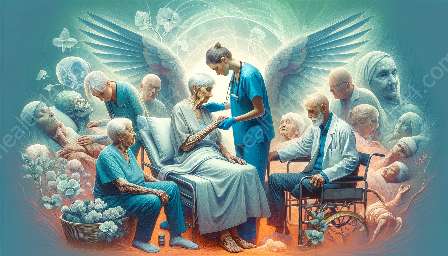In our aging society, physical activity plays a crucial role in maintaining the health and well-being of older adults. This article explores the relationship between physical activity and healthy aging, its compatibility with elderly care and support services, and its relevance to geriatrics. We will delve into the benefits of physical activity for senior citizens, the types of activities suitable for their age group, and how to promote an active lifestyle in elderly individuals.
Understanding Healthy Aging
As people age, their bodies undergo various changes, including a decline in muscle mass, bone density, and overall physical strength. Additionally, aging is often accompanied by an increased risk of chronic conditions such as heart disease, diabetes, and arthritis. However, maintaining an active lifestyle and engaging in regular physical activity can significantly mitigate these age-related changes and improve overall health and well-being.
The Role of Physical Activity
Physical activity is vital for healthy aging as it offers numerous benefits for older adults. Regular exercise can help maintain muscle mass and strength, improve bone density, and enhance balance and coordination, reducing the risk of falls and fractures. Moreover, physical activity can have a positive impact on mental health, promoting cognitive function, reducing the risk of dementia, and alleviating symptoms of depression and anxiety.
Benefits of Physical Activity for Seniors
1. Enhances Physical Function: Engaging in regular physical activity can improve flexibility, endurance, and mobility, allowing seniors to maintain their independence and perform daily activities with ease.
2. Reduces Risk of Chronic Diseases: Physical activity can lower the risk of developing chronic conditions such as heart disease, diabetes, osteoporosis, and certain types of cancer.
3. Supports Mental Well-being: Exercise can boost mood, alleviate stress, and enhance cognitive function, contributing to improved overall mental health and well-being.
Types of Physical Activity for Seniors
When it comes to physical activity for elderly individuals, it's important to consider their unique needs and capabilities. Low-impact exercises such as walking, swimming, yoga, and tai chi are particularly beneficial for seniors as they are gentle on the joints and help improve flexibility and balance. Strength training activities using light weights or resistance bands can also help maintain muscle mass and prevent age-related muscle loss.
Promoting an Active Lifestyle
Integrating physical activity into the lives of older adults requires a multi-faceted approach. Caregivers, healthcare professionals, and support services play a pivotal role in promoting an active lifestyle among seniors. Providing access to suitable exercise facilities, organizing group fitness classes, and offering tailored exercise programs can encourage older individuals to stay physically active. Additionally, raising awareness about the importance of regular exercise and dispelling common myths about the limitations of age can motivate seniors to incorporate physical activity into their daily routines.
Compatibility with Elderly Care and Support Services
Physical activity is closely aligned with the goals of elderly care and support services. These services aim to enhance the quality of life for older adults by addressing their physical, emotional, and social needs. By incorporating physical activity into the care plans of seniors, support services can contribute to the overall well-being of their clients. This can include providing assistance with mobility, facilitating access to fitness programs, and offering guidance on safe and appropriate exercise routines.
Relevance to Geriatrics
Geriatrics, the branch of medicine focused on the health and care of older adults, recognizes the significance of physical activity in promoting healthy aging. Healthcare professionals specializing in geriatrics are well-versed in the benefits of exercise for seniors and can provide tailored advice on physical activity, taking into account the unique health conditions and limitations often faced by elderly individuals. They may also collaborate with other care providers to develop comprehensive care plans that encompass physical activity as a key component.
Conclusion
Physical activity is a cornerstone of healthy aging and should be an integral part of elderly care and support services. By understanding the benefits of physical activity for seniors, recognizing the types of activities suitable for their age group, and promoting an active lifestyle, we can empower older adults to lead fulfilling and healthy lives. Through the integration of physical activity into geriatric care, we can work towards ensuring that aging is synonymous with vitality, strength, and well-being.


